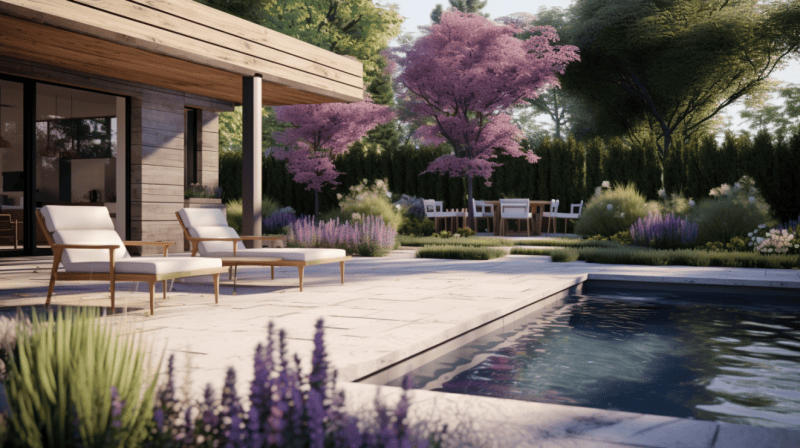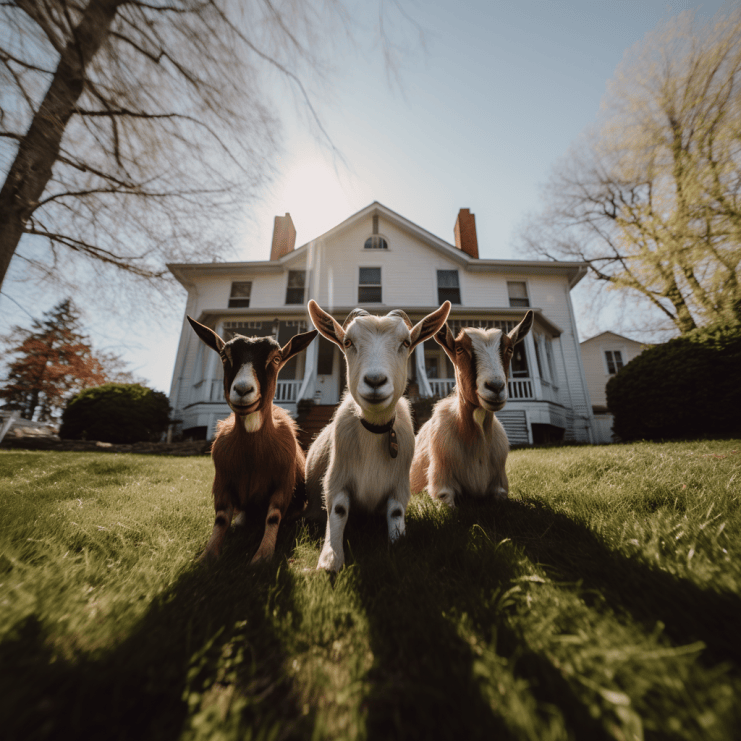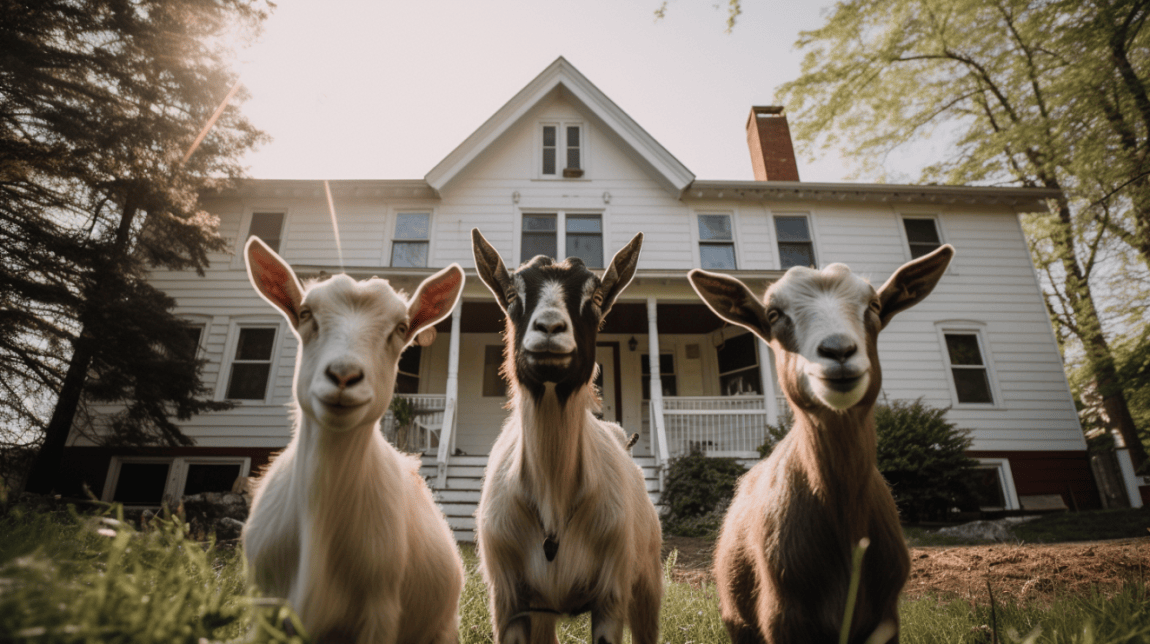If you’re looking to make some changes to your outdoor space, it makes sense to focus on how you can contend with the elements. Whether it’s dry summers or cold and rainy winters, you can only make the most of your yard if you prepare properly and put the right infrastructure in place to use it all year round. We’re going about some of the changes that’ll have the biggest impact on your yard.
General Rules About Plants To Make Your Yard More Eco-Friendly
Let’s start off with a big “catch-all” category about selecting the right plants for your yard. You want your yard to look great but it’s also important that it is a net-positive to both your neighborhood and the surrounding area.
Here are some important guidelines to follow so you can make that happen!
Choose Native Plants
Native plants are the way to go if you want an eco-friendly yard. Why?
- They're adapted to local climate and soil conditions
- They need less water and fertilizers
- They support local wildlife
Here's a simple comparison of native plants and non-native ones:
| Features | Native Plants | Non-native Plants |
|---|---|---|
| Water Requirement | Low | High |
| Fertilizer Requirement | Low | High |
| Support to Local Wildlife | High | Low |
Go Organic
Ditch the synthetic fertilizers and pesticides. They harm the environment and beneficial organisms in your soil. Instead, opt for organic compost and natural pest control methods.
Plant Trees
Trees are nature's air filters. They absorb carbon dioxide and release oxygen. Plus, they provide shade and habitat for wildlife.
Use Mulch
Mulch is a gardener's best friend. It conserves water, suppresses weeds, and enriches the soil.
- Organic mulch: wood chips, straw, compost
- Inorganic mulch: gravel, pebbles
Install a Rain Garden
Rain gardens are great for managing stormwater runoff. They're filled with plants that can tolerate both wet and dry conditions.
Steps to install a rain garden:
- Choose a location where water tends to collect in your yard
- Dig a shallow depression
- Fill it with compost and native plants
Encourage Wildlife
Attract birds, bees, and butterflies to your yard. They're not just beautiful to watch, but they also help with pollination and pest control.
- Plant flowers that produce nectar
- Install a bird feeder or a bird bath
- Leave some areas of your yard undisturbed for wildlife habitat
Practice Water Conservation
Water is a precious resource. Use it wisely in your garden.
- Water plants early in the morning or late in the evening to reduce evaporation
- Use a rain barrel to collect rainwater for watering plants
- Choose drought-tolerant plants
By following these rules, you'll not only have a beautiful yard, but also one that's kind to Mother Earth. Isn't that a win-win?
Collect Rainwater for Hotter and Dryer Periods
If you want to make sure that you’re always able to deal with hot summers, which we’re likely to see more of going forward, you’ll need to make sure that you have the water to do it. Your garden will need water when it’s warm and dry, and an increasing number of droughts mean that using the main water supply might not be the best option. Collecting rainwater and using it when you need it most is the way to go.
Collecting rainwater for later use is an excellent way to conserve water and maintain your garden during drier periods. Here's a simple guide on how you can do this:
- Get a Rain Barrel: The first step is to get a rain barrel, which is a large container that collects and stores rainwater. You can purchase one or make your own using a large trash can or drum. Ensure that the barrel is clean and free from chemicals.
- Install the Rain Barrel: Position the rain barrel under a downspout from your roof. If you don't have a downspout, place it anywhere where water tends to fall off your roof. You may need to adjust your gutter system to direct water into the barrel.
- Set Up a Diverter: Consider installing a diverter, which will direct the water into the barrel when it rains and then back down the downspout when the barrel is full. This prevents overflow and potential damage to your home's foundation.
- Cover the Barrel: Cover the top of the barrel with a lid or screen to prevent debris and insects from getting into the water.
- Connect a Hose: Attach a hose or spigot at the bottom of the barrel. This will allow you to easily access the stored water for watering your plants and lawn.
- Maintain Your System: Regularly check your rain barrel system to ensure it's working properly. Clean out any debris and make sure the hose or spigot is not clogged.
Remember, it's important to use the collected rainwater within a week or two to prevent the growth of algae and mosquitoes. Also, depending on where you live, there may be local regulations about collecting rainwater, so be sure to check those before setting up your system.
Invest In Permeable Hardscape To Avoid Water Runoff
Alright, let's talk about your backyard for a minute. Now, I know when most folks imagine their dream backyard, they're thinking about grand patios, stone pathways, maybe even an outdoor kitchen. All that stuff is great and can definitely make your yard look like something out of a home improvement magazine. But here's the problem: when everything's made of concrete or other hard materials, you've basically created a mini cityscape right in your own backyard. And cities aren't exactly known for being eco-friendly, are they?
So, why's this a problem? Well, think about what happens when it rains. Normally, the rainwater would soak into the ground, providing much-needed hydration for your plants and helping to keep the soil healthy. But when you've got all this hardscape, there's nowhere for the water to go but off to the sides.
You might be thinking, "Well, that's not so bad. The water just goes off somewhere else." But here's the thing: that water runoff isn't just harmless H2O making a quick exit. It can lead to erosion over time, which means you're gradually losing precious topsoil from your yard. Plus, all that water that could have been used by your plants? It's getting wasted. Instead of nourishing your greenery, it ends up in a storm sewer and ultimately finds its way to a retaining pond miles away.
So what can we do about this? The answer is surprisingly simple: we need to give that water somewhere to go. By incorporating more eco-friendly elements into your yard design - like permeable pavers for your patio or rain gardens around your property - you can help ensure that rainwater gets absorbed back into the ground where it belongs, rather than being lost to the sewer system. This way, you're not only creating a stunning backyard oasis but also doing your part to protect our environment.

Create Natural Shade To Protect You From The Sun
It’s a hot day and you’re wanting to avoid sitting in the direct sunlight. That big oak tree sure looks inviting, so you walk over and sit under it to relax for a moment. Let’s take that core idea now and apply it to the rest of your yard.
For instance, look for trees that provide maximum shade and plant them in areas where you’ll want protection from the sun such as near your outdoor dining area or a bench that you’ve placed to enjoy the view.
This way you can stay naturally cool and avoid needing to bring outdoor fans and misters to cool you off this summer.
Plant Tall Hedges To Add Extra Privacy
Blocking out the wind will make it much easier to enjoy your yard. None wants to be sitting out there constantly being battered by the wind. So use a good fence and some hedge to keep the wind out. It might not sound like much but it’ll make a big difference to the space and how you use it.

Consider Plants That Insects Avoid
There are several plants you can consider adding to your yard to deter insects like flies and mosquitos.
- Citronella Grass: Known for its distinct smell, citronella grass is one of the most commonly used natural insect repellents.
- Marigolds: These vibrant flowers emit a smell that deters mosquitos, and they can also help to ward off other pests like aphids and rabbits.
- Lavender: While humans often love the smell of lavender, mosquitos, flies, and other unwanted insects hate it.
- Basil: Planting basil can help to repel both flies and mosquitos. Plus, you can use the plants in your cooking!
- Catnip: Studies have shown that catnip can be even more effective at repelling mosquitos than DEET, the main substance used in most insect repellents.
- Peppermint: This plant repels mosquitos and can also help to ward off other pests like ants and spiders.
- Lemon Balm: Also known as horsemint, lemon balm's aroma deters bugs but attracts humans and bees.
- Rosemary: In addition to repelling mosquitos, rosemary has been known to prevent other insects that harm vegetable plants.
- Geranium, particularly the lemon-scented variety, is effective at keeping mosquitos away.
- Garlic: Mosquitos don't like the smell of garlic. You can either plant it around your yard or simply spread some garlic powder where you want to repel the insects.
Remember, the effectiveness of these plants can vary, and they are more likely to work if you plant them in large amounts. Also, while these plants can help deter insects, they are not a guaranteed solution and should be used in conjunction with other preventative measures.
Build A Patio Area That Can Be Screened In Rather That Using Chemical Bug Deterrents
In some climates, simply planting garlic and peppermint isn’t going to be enough to keep mosquitos away and since we want to avoid harsh pesticides, you might want to consider investing in screened-in porch area that you can close off completely from any bugs (and add some shade as well).
Depending on your budget you can find DIY solutions or contact a supplier like Panama Shades to help you create the perfect environment.

Consider Using Goats Instead of Lawn Mowing
While it might seem crazy, goats can be an effective alternative to traditional lawn care. They are often used in areas where the terrain is rough or difficult to manage with lawn mowers. Here's how you can use goats for lawn maintenance:
- Hire a Professional Service: There are professional services that rent out goats for land clearing. These services usually provide a herd of goats, a herder, and a fence to contain the goats. The service provider will assess your land, determine the number of goats needed, and the time it will take to clear the area.
- Buy or Adopt Goats: If you have a large property or live in a rural area, you might consider owning goats. Breeds like the Pygmy, Nubian, or Boer are excellent for grazing. Remember, goats are social animals and prefer to live in groups.
- Grazing: Goats eat a variety of vegetation, including grass, weeds, and brush. They are particularly useful in controlling invasive plant species that are difficult to eliminate.
- Safety Measures: It's important to provide a secure fenced area for the goats to prevent them from wandering off. Also, ensure they have access to fresh water and a shelter from extreme weather.
- Environmental Benefits: Using goats for lawn maintenance can be environmentally friendly. They reduce the need for gas-powered mowers and chemical weed killers. Their droppings also act as a natural fertilizer, enriching the soil.
- Health Check: Regular health checks are crucial to prevent diseases and ensure the goats are in good condition.
Remember, while goats can be an effective lawn maintenance tool, they require care and attention. Make sure you're prepared for the responsibility before opting for this alternative.
Also, before you go down this path - talk with your HOA and check any community regulations to check on any permits that might be required to have a herd of goats in your yard!
Conclusion: Embracing Eco-Friendly Yard Improvement
Investing in an eco-friendly yard isn’t an easy task. There will be times that you want to make a decision to do things the easy way, save money, avoid headaches, and get things done faster by using chemical fertilizers or cheaper plants and other materials. The end result will be worth it though. This is going to be an awesome back-yard oasis that you can be proud of.
Let’s take a look at some final tips and advice on green landscaping.
Consider Your Yard's Current State
First things first, take a good look at your yard. What's its current state? Is it a blank canvas, or does it already have established plants and trees?
- If it's a blank canvas, you've got a lot of freedom to play around with eco-friendly yard ideas.
- If there are already established plants, you might need to consider how to incorporate them into your eco-friendly plans.
Eco-Friendly Yard Features Comparison
| Features | Pros | Cons |
|---|---|---|
| Native Plants | Low maintenance, supports local wildlife | Limited variety |
| Composting | Reduces waste, enriches soil | Requires space, can smell |
| Rainwater Harvesting | Saves water, reduces runoff | Initial setup cost, seasonal variability |
Explore Options
There are a ton of eco-friendly yard improvement options out there. Here are a few examples:
- Planting native plants
- Starting a compost pile
- Installing a rainwater harvesting system
- Setting up a bird feeder or bat house
- Using solar-powered yard lights
Steps to Embrace Eco-Friendly Yard Improvement
- Research: Learn about the different eco-friendly yard options and what might work best for your yard.
- Plan: Sketch out a plan for your yard, considering factors like sun exposure, soil type, and local wildlife.
- Purchase: Buy the necessary materials and plants. Opt for eco-friendly and sustainable options whenever possible.
- Implement: Start implementing your plan. This might involve planting, setting up a compost pile, or installing a rainwater harvesting system.
- Maintain: Keep up with regular maintenance to ensure your yard stays eco-friendly.
Consider the Cost
Eco-friendly yard improvements can sometimes come with a higher upfront cost, but they often save money in the long run. For example, native plants typically require less water and maintenance, saving you money on your water bill and gardening supplies.
Think About the Time Commitment
Some eco-friendly yard improvements require a significant time investment. Composting, for example, requires regular turning and monitoring. Make sure you're ready to commit the necessary time before diving in.
The Impact on Local Wildlife
Eco-friendly yard improvements can have a big impact on local wildlife. Native plants can provide food and shelter for local birds and insects, and a bird feeder or bat house can attract beneficial wildlife to your yard.
The Aesthetic Appeal
Lastly, consider how the eco-friendly improvements will impact the look of your yard. Native plants, for example, can create a beautiful, natural-looking landscape. But if you prefer a more manicured look, you might need to get creative with your plant choices.

